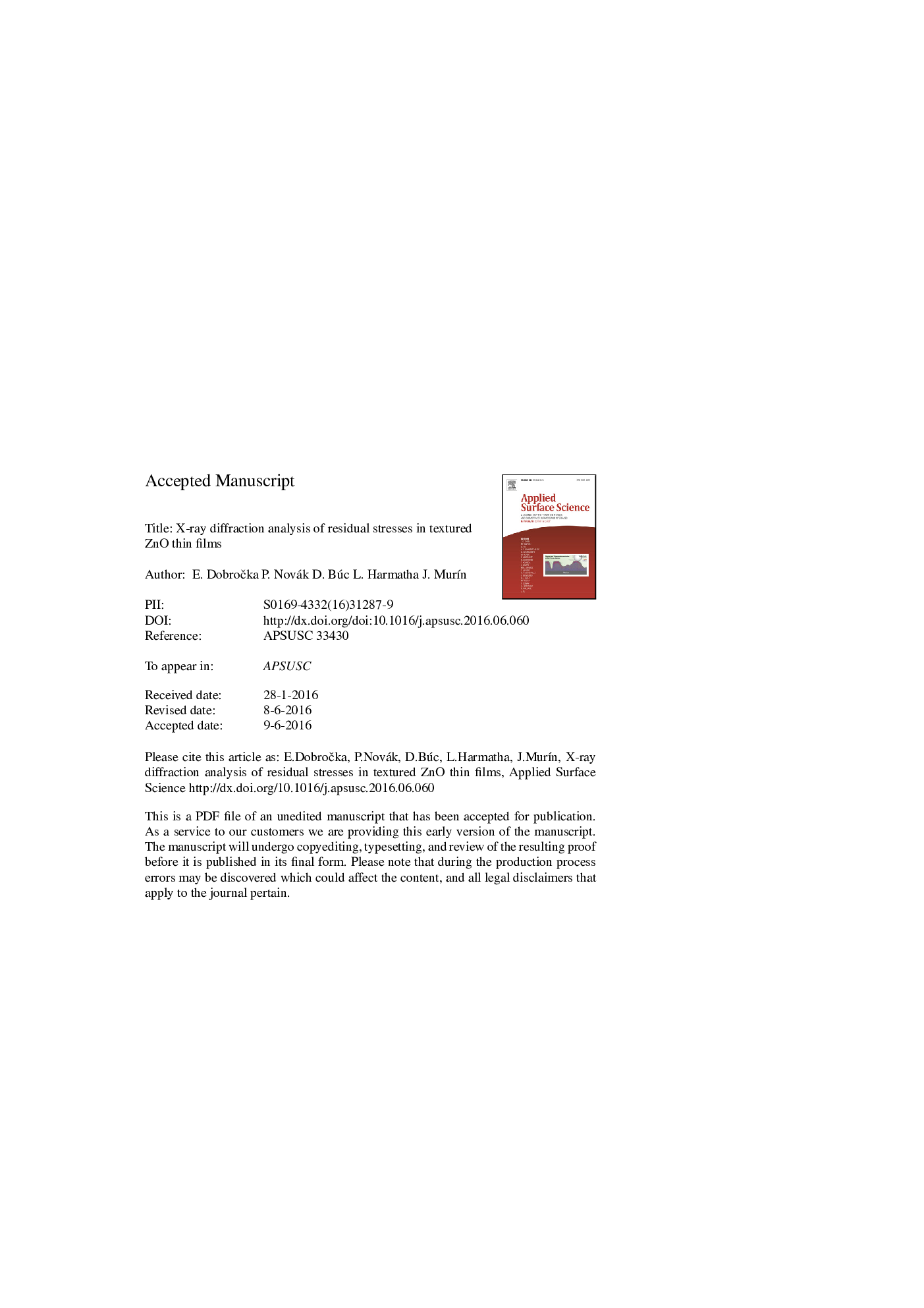| Article ID | Journal | Published Year | Pages | File Type |
|---|---|---|---|---|
| 5348085 | Applied Surface Science | 2017 | 19 Pages |
Abstract
Residual stresses are commonly generated in thin films during the deposition process and can influence the film properties. Among a number of techniques developed for stress analysis, X-ray diffraction methods, especially the grazing incidence set-up, are of special importance due to their capability to analyze the stresses in very thin layers as well as to investigate the depth variation of the stresses. In this contribution a method combining multiple {hkl} and multiple Ï modes of X-ray diffraction stress analysis in grazing incidence set-up is used for the measurement of residual stress in strongly textured ZnO thin films. The method improves the precision of the stress evaluation in textured samples. Because the measurements are performed at very low incidence angles, the effect of refraction of X-rays on the measured stress is analyzed in details for the general case of non-coplanar geometry. It is shown that this effect cannot be neglected if the angle of incidence approaches the critical angle. The X-ray stress factors are calculated for hexagonal fiber-textured ZnO for the Reuss model of grain-interaction and the effect of texture on the stress factors is analyzed. The texture in the layer is modelled by Gaussian distribution function. Numerical results indicate that in the process of stress evaluation the Reuss model can be replaced by much simpler crystallite group method if the standard deviation of Gaussian describing the texture is less than 6°. The results can be adapted for fiber-textured films of various hexagonal materials.
Related Topics
Physical Sciences and Engineering
Chemistry
Physical and Theoretical Chemistry
Authors
E. DobroÄka, P. Novák, D. Búc, L. Harmatha, J. MurÃn,
